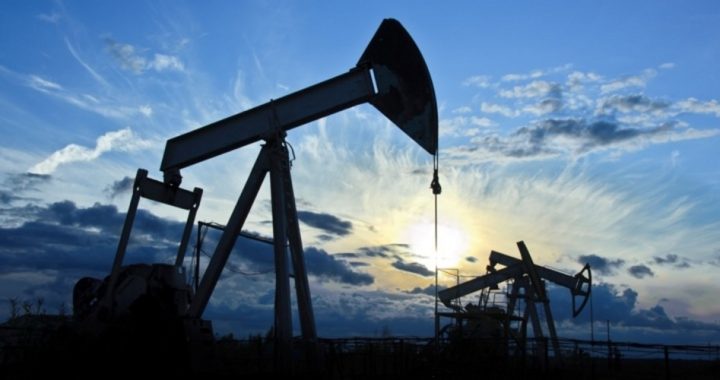
The latest report from the U.S. Energy Information Agency (EIA) not only confirmed the explosive growth in the country’s proven reserves of oil and natural gas, it also shattered popular myths about America’s decline:
Proved reserves of U.S. oil and natural gas in 2010 rose by the highest amounts ever recorded since the U.S. Energy Information Administration (EIA) began publishing proven reserves estimates in 1977.
Net additions to proved reserves of crude oil plus lease condensate in 2010 totaled 2.9 billion barrels, surpassing the previous high of 1.8 billion barrels added in 2009 by 63 percent …
Net additions of wet natural gas in 2010 totaled 33.8 trillion cubic feet (Tcf), nearly 17 percent higher than the previous record of 28.8 Tcf, also added in 2009. [Emphases added.]
“Proved reserves” are defined as “those volumes of oil and natural gas that geologic and engineering data demonstrate with reasonable certainty to be recoverable in future years from known reservoirs under existing economic and operating conditions.” In other words, no hype here. This is the real deal.
And notice, please, that this is for the year 2010. The report for 2011 won’t be out until the spring of 2013 when it is expected that further increases will be announced.
Says the EIA, “Central to the increases was the combination of horizontal drilling and hydraulic fracturing technologies.” What EIA failed to say was that the free market was responding to high prices, and risk capital was finding its way to its highest and best use.
The first myth the report exploded was that promoted by the New York Times last summer: that so much of that capital was fueling a “bubble” of speculation that looked sure to disappoint. The Times quoted an analyst from IHS Drilling Data, an energy research company, who wrote an email in August 2009: “The word in the world of independents is that the shale plays are just giant Ponzi schemes and [that] the economics just do not work.”
A geologist at Chesapeake Energy was also quoted by the Times saying that “our engineers here project these wells out to 20-30 years of production and in my mind that has yet to be proven viable. In fact, I’m quite skeptical of it myself.”
He’s likely a believer now.
The next myth exploded by the EIA is that called the Hubbert Peak Theory which was developed by an American geophysicist, M. King Hubbert, who said that petroleum production tends to follow a bell-shaped curve, reflecting inevitable declines in production due to “resource depletion.” It’s based on the now-disproved theory that the amount of oil under the ground in any region is finite and that production rises and then falls as that finite amount is depleted.
As John Hanger, a noted expert on energy and gas drilling issues, wrote:
EIA’s proved gas reserves jumped the most it has in 35 years, more than 11%. While the 2010 rise was especially big, it was not a fluke. EIA’s estimates of proved gas reserves have increased for 12 straight years.
Most impressively, proved gas reserves in 2010 were up 50% compared to the 2005 number or the 1980 number. That’s right: our proved gas reserves are 50% higher in 2010 than 30 years ago, despite using a lot of gas during that 30 year period. [Emphasis added.]
How can that happen if Hubbert was right? The answer, inevitably, is the free market: finding ways not only to develop new resources but to enhance existing ones beyond any limiting theories like Hubbert’s, or Peak Oil. The Peak Oil theory is based on Hubbert’s curve and is described as that point in time when the maximum rate of oil extraction is reached, after which the rate of production enters a terminal decline. Unfortunately for that theory, the real world has bent the proved reserves curves upward, embarrassing both the New York Times and Mr. Hubbert.
Even a hardened progressive such as Walter Russell Mead was forced to admit the obvious:
If the energy revolution now taking shape lives up to its full potential, we are headed into a new century in which the location of the world’s energy resources and the structure of the world’s energy trade support American affluence at home and power abroad….
The energy bonanza changes the American outlook far more dramatically than most people yet realize. This is a Big One, a game changer, and it will likely be a major factor in propelling the United States to the next (and still unknown) stage of development — towards the next incarnation of the American Dream.
When left alone, the American entrepreneur with access to capital will allow it to find its highest and best use. As the energy development revolution in this country continues, its impacts will be felt across the country and around the world. It is estimated that the energy boom has already generated some 600,000 new jobs, and when manufacturing and processing industries return to the United States to take advantage of low energy costs, those jobs will be multiplied by a factor of 10.
As Mead mused on the energy revolution taking place in America, he was led to acknowledge a higher power:
Nature — or perhaps Nature’s God — seems to love mocking pundits. Just when the entire punditocracy, it sometimes seemed, had bought into the “American decline” meme, Europe collapsed and huge energy reserves were discovered underneath the United States.
The “special providence” that observers have from time to time discerned in America’s progress through history doesn’t seem to be quite finished with us yet.



